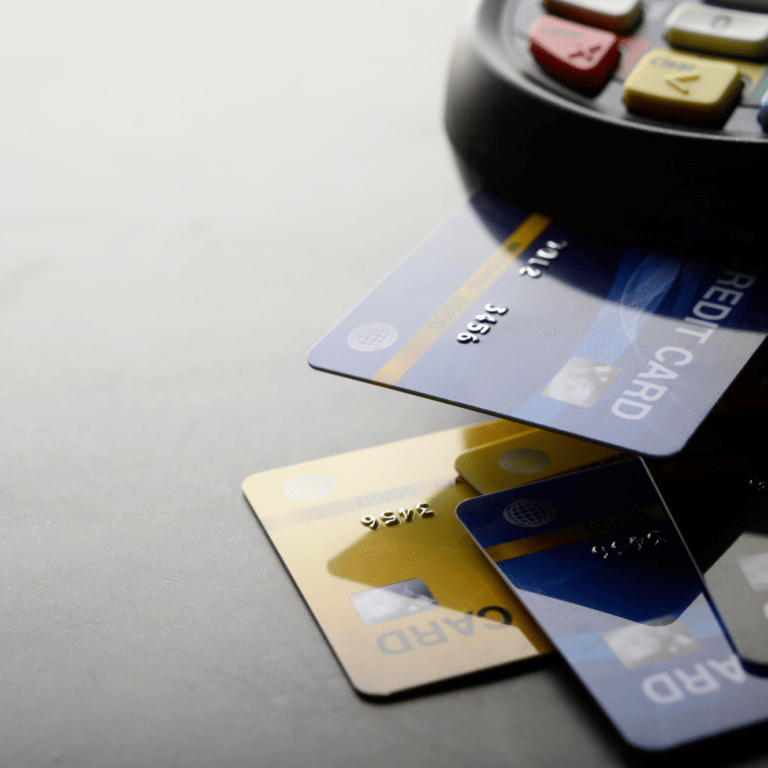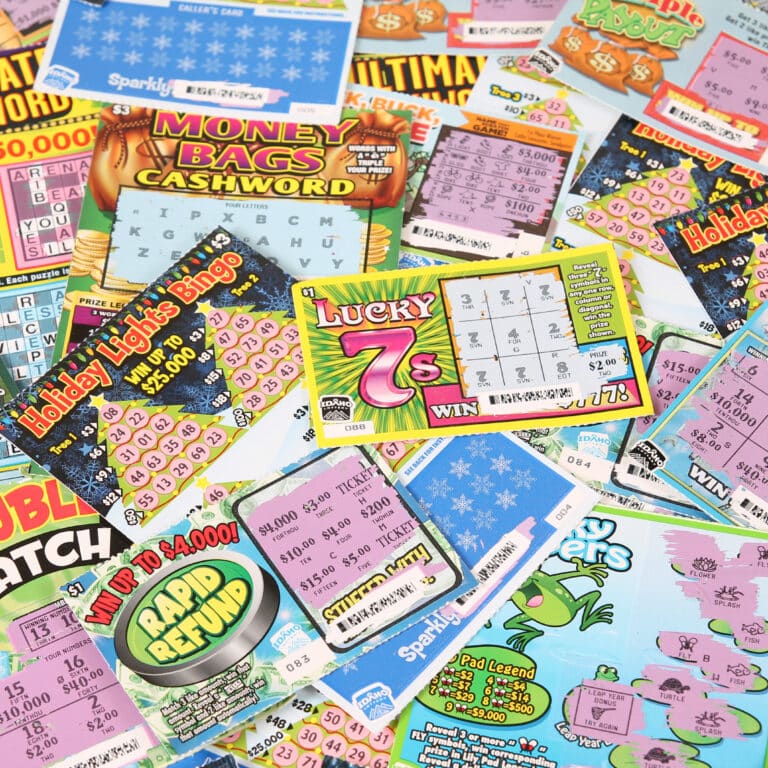The Best Credit Cards for Students To Build Their Financial Future
Credit cards can be a valuable tool for students looking to build credit and establish good financial habits – as long as they're used responsibly. However, with so many options available, it can be overwhelming for students to navigate the best credit cards.
The following list of the best credit cards for students is broken down by category to help you or your student quickly find the card that best suits their needs.
Best Cashback Credit Cards
The most popular and typically best credit card type for students is the cashback credit card. These cards allow students to earn a percentage of their spending back in cash rewards, ranging from 1% to 3%.
Many great options on the market fit different spending needs and cashback opportunities in different categories, such as gas, groceries, and dining. Plus, some offer low or 0% introductory APR for the first several months to a year.
Cashback Cards With Popular Banks
One of the easiest ways to get approved for a student credit card is to apply with a bank with which they already have an existing relationship. Many central banks offer cashback credit cards specifically for students or people without a credit history.
Top card offers include:
- Bank of America Customized Cash Rewards for Students: No annual fee, up to 3% cashback in one chosen category (1% for everything else), and up to a $200 introductory bonus when $1,000 is spent in the first 90 days.
- Chase Freedom Rise: While this card isn't explicitly designed for students, it's for anyone needing to build their credit. No annual fee and 1.5 points per $1 spent that can be used for the highly sought-after Chase rewards program (can be used for cashback, purchases, or travel).
- Wells Fargo Cashback Credit Card: No annual fee, 3% cashback for gas, groceries, and drugstore purchases for six months, and 1% on other purchases.
Cashback Cards With Popular Brands
Aside from a local bank, big card brands like Mastercard, Citi, Capital One, and Discover also offer great cashback options for students. These credit cards often have added perks, such as no foreign transaction fees or extended warranty protection on purchases.
Top choices include:
- Discover It Student Cashback: No annual fee, 2% cash back on gas and restaurants (1% cash back on all other purchases), no credit score needed to apply, and a cashback reward match for the first year (i.e., if you earn $50, they'll give you another $50).
- Capital One Quicksilver Student Cash Rewards Credit Card: No annual fee or foreign transaction fees, unlimited 1.5% cash back rewards, and a $50 cash bonus for spending $100 in the first three months. Plus, there is reimbursement for an Uber One membership and 10% cash back on Uber purchases.
Best Travel Rewards Credit Cards
A travel rewards credit card can be an excellent option for students who love to travel and explore the world. These cards often offer sign-up bonuses in the form of points or miles, which can be redeemed for flights, hotels, and more.
Top credit card offers include:
- Bank of America Travel Rewards Credit Card for Students: No annual fee, 1.5 points for each $1 spent, 25,000 bonus miles/points after spending $1000 in the first three months.
- Capital One SavorOne Student Cash Rewards Credit Card: No annual fee, up to 3% cashback in rotating categories, 5% cashback on hotels and transportation booked through Capital OneTravel, no transaction fees, and travel accident insurance.
How To Choose Student Credit Cards
College students should consider a few key factors when choosing a credit card.
- Find a Starter Card That Doesn't Require Credit: Many students may not have any credit history, making it difficult to be approved for a traditional credit card. Look for starter cards that don't require credit (most student cards).
- Annual Fees: As a student, choosing a card without an annual fee is important, especially if you're on a tight budget. Plenty of great options offer no annual fee that works great for a student's needs.
- Rewards and Benefits: Select a credit card with rewards or benefits that align with spending habits. For example, if a student frequently shops at a particular store or wants to travel, look for a card that offers cashback or discounts at that particular store or airline. For rewards, also pay attention to whether cashback or other rewards expire.
- Interest Rates: Understanding the interest rates associated with a credit card and any penalties for late payments is essential. Look for cards with 0% APR for the first few months and low interest rates (although it's always better to pay the card fully each month), and consider setting up automatic payments to avoid late fees.
- Streamlining Money Use: For most students, getting started with a credit card through their bank is easiest. Plus, this can make managing payments and transfers between accounts easier.
Note: Students in high school (under 18 years old) or younger will need more involvement from their co-signer (aka parents).
The Benefits of Having a Student Credit Card
One of the main benefits of using credit cards for students is building a better credit score. Good credit is essential for future financial endeavors such as renting an apartment, buying a car, or taking out loans for large purchases like a home. By building credit early on, students can establish themselves as reliable borrowers and qualify for better interest rates in the future.
Another benefit of having a student credit card is learning how to manage money responsibly. With a credit card, students can learn about budgeting and making payments on time, which are crucial skills for financial success in the long run. Some student credit cards offer features such as gamified savings challenges, spending alerts, and budgeting tools to help students stay on track with their expenses.
Finally, a college student can take advantage of rewards that fit their lifestyle with a student credit card. Whether it's cashback on everyday purchases or discounts on travel, these rewards can help students save money and make the most out of their spending.
The Drawbacks of a Student Credit Card
While there are many benefits to having a student credit card, there are also some drawbacks to consider. One potential downside is the temptation to overspend what they make in an hour and accumulate credit card debt. Without proper budgeting and financial discipline, students may find themselves in debt that they struggle to pay off.
Additionally, student credit cards may have lower credit limits than traditional ones. This can disadvantage students who need to make larger purchases or a higher credit limit for emergencies.
Students should be aware of the potential impact on their credit scores. Late payments and high credit utilization can negatively affect a student's credit score, making it more challenging to obtain loans or other financial opportunities in the future.
Tips for Responsible Credit Card Use
While having a student credit card can be beneficial, it's essential to use it responsibly to avoid falling into debt. Here are some tips for responsible credit card use:
- Pay off the balance in full each month: To avoid accruing interest and potential debt, it's best to pay the entire balance each month. This also helps build good credit.
- Set a budget: Before making any purchases, create a budget and stick to it. This can help prevent overspending and going over the credit limit.
- Stay organized: Keeping track of all credit card transactions, due dates, and payments is essential. This can ensure timely payments and late fees.
- Avoid cash advances: Cash advances on credit cards often have high-interest rates and additional fees, so it's best to avoid them if possible.
- Maximize rewards: Take advantage of any rewards or benefits, keeping track to get the most out of cashback before expiration.
Best Student Credit Cards FAQ:
Which Credit Card Is Best for Students?
Any card with no annual fee, rewards, or benefits is a great student option. Some top choices include Discover It Student Cashback, Capital One Quicksilver Student Cash Rewards Credit Card, Bank of America Travel Rewards Credit Card for Students, and Capital One SavorOne Student Cash Rewards Credit Card.
How Can Students Build Credit With a Credit Card?
To build credit with a credit card, students should focus on making timely payments, keeping credit card balances low, and avoiding opening too many credit cards simultaneously. It's also important to regularly check credit scores and dispute any errors or fraudulent activity.
What if a Student Doesn't Qualify for a Card?
There are options if a student doesn't qualify for a student-specific credit card, even ones like Discover It Cashback (listed above) that don't require a credit history. Students may consider getting a secured credit card or becoming an authorized user of their parent's credit. A secure credit card requires a cash deposit as collateral and can help students build credit. Becoming an authorized user allows students to use credit cards backed by their parents' good credit history.
How Does a Student Qualify for a Credit Card?
Students typically must be at least 18 years old and enrolled in college. Some credit card companies may also require proof of income or a co-signer if the student has little or no credit history.
This article originally appeared on Wealth of Geeks.







